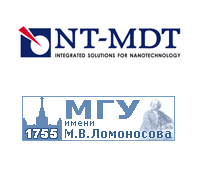
Nano and Giga Challenges
in Electronics, Photonics and Renewable Energy
Symposium and Summer School (Tutorial Lectures)
Moscow - Zelenograd, Russia, September 12-16, 2011


|
Nano and Giga Challenges in Electronics, Photonics and Renewable Energy Symposium and Summer School (Tutorial Lectures) Moscow - Zelenograd, Russia, September 12-16, 2011 |  |
Commentary David Lockwood
Optoelectronics and photonics are playing an essential role in many aspects of daily life, including information and communication technologies, environmental and green technologies, mechanical and chemical sensing, consumer electronics, and biomedicine. So far, the use of optical components in communication systems has been mainly limited to direct replacement of electrical cables by optical cables. With the continual increase in link bit rates, optical cables are now replacing electrical cables for shorter and shorter interconnect lengths. Optoelectronic and photonic technologies are becoming less costly and more integrated, and there is currently an opportunity for optics to move “inside the box” and change the interconnect topology at all levels. Currently, most optoelectronic devices are fabricated as discrete components. This approach is based on serial (e.g., step-by-step) fabrication and packaging, and it makes optoelectronic technology drastically different compared to microelectronics, where the domination of parallel fabrication made possible ultra-large scale integration with the price of individual devices below $10-8. Also, discrete assembly reduces the optoelectronic system reliability and decreases the manufacturing yield. Additional complications arise due to materials issues: in microelectronics the major material is elemental Si, while traditional semiconductor materials for optoelectronics are III-V alloys with much more complex technological requirements. Finally, optical waveguides and waveguide based devices are very bulky compared to electron devices; thus, the densities of electron devices in integrated circuits are many orders of magnitude greater compared to that in integrated optoelectronic systems. Silicon photonics, where photonics devices are fabricated by using silicon or silicon compatible materials and where the manufacturing is based on the available microelectronics infrastructure, is emerging as the technology that can face all these challenges. Two major avenues toward optical interconnects on a chip include a hybrid approach with densely packaged III-V optoelectronic components and the all-group-IV approach (mainly Si, Ge and SiGe), where all the major components, e.g., light emitters, modulators, waveguides and photodetectors, are monolithically integrated into the CMOS environment. Although many of the required OEIC components can now be produced this way, the all-group IV approach still requires a Si-based light source. For almost five decades, the efforts on obtaining light emission from group-IV semiconductors have been mainly focused on porous silicon, silicon/silicon dioxide superlattices, silicon nanoprecipitates in silicon dioxide, erbium in silicon, silicon/germanium quantum wells, and, more recently, iron disilicide. However, no approach has so far been applied commercially. There are several reasons, including the lack of a genuine or perceived compatibility with conventional CMOS technology, the long carrier radiative lifetime in Si-based nanostructures (NSs), and, especially in the case of near-infrared emitters, the significant thermal quenching of the luminescence quantum efficiency. By the 1990s, a different form of SiGe NS, namely the three-dimensional (3D) self-assembled system produced by the well known Stranski-Krastanov, or cluster-layer, growth mode in lattice mismatched materials, had been demonstrated . It has been shown that dislocation-free SiGe growth can be achieved using a higher temperature (≥ 600oC), and that the non-planar geometry is mainly responsible for the significant increase of the SiGe critical layer thickness. It has also been found that, compared to two-dimemensional (2D) Si/SiGe NSs, the photoluminescence (PL) and electroluminescence (EL) quantum efficiency in 3D Si/SiGe NSs is higher (up to 1%), especially for T > 50 K. Despite many successful demonstrations of PL and EL in the spectral range of 1.3-1.6 μm, which is important for optical fiber communications, the proposed further development of 3D Si/SiGe based light emitters was discouraged by several studies indicating a type II energy band alignment at Si/SiGe heterointerfaces, where the spatial separation of electrons (located in Si) and holes (localized in SiGe) was thought to make carrier radiative recombination very inefficient. Later, it was also shown that 3D Si/SiGe NSs exhibit an extremely long (of the order of 10-2 s) luminescence lifetime, which is of the order of a million times longer than in III-V semiconductors and their NSs. Thus, according to this analysis, 3D Si/SiGe NSs cannot be used to achieve efficient and commercially valuable light emitting devices. Recently, however, we have shown that despite the fact that the Si/SiGe heterointerface most likely exhibits type II energy band alignment, it is still possible to obtain conditions favorable for an efficient carrier radiative recombination and that the radiative carrier recombination lifetime can successfully be reduced from 10-2 s to 10-7 s, which is only ~ 10 times longer than that found in direct bandgap III-V semiconductors. These experimental observations suggest that by controlling and modifying the composition of Ge-rich SiGe clusters (and possibly other types of Si/SiGe 2D and 3D NSs) it is possible to fabricate a more efficient SiGe light-emitting device. Despite the challenges associated with integration into the traditional CMOS environment, the proven compatibility between Si/SiGe and conventional CMOS technology suggests that this task is not an impossible one.
Selected bibliography |
Empowered by Nano & Giga Solutions and NT-MDT
© 2010